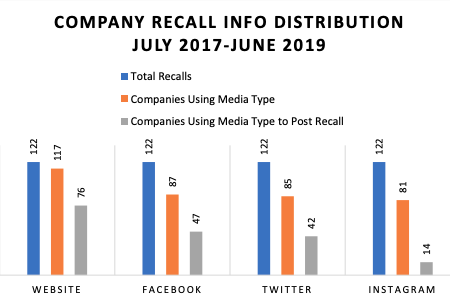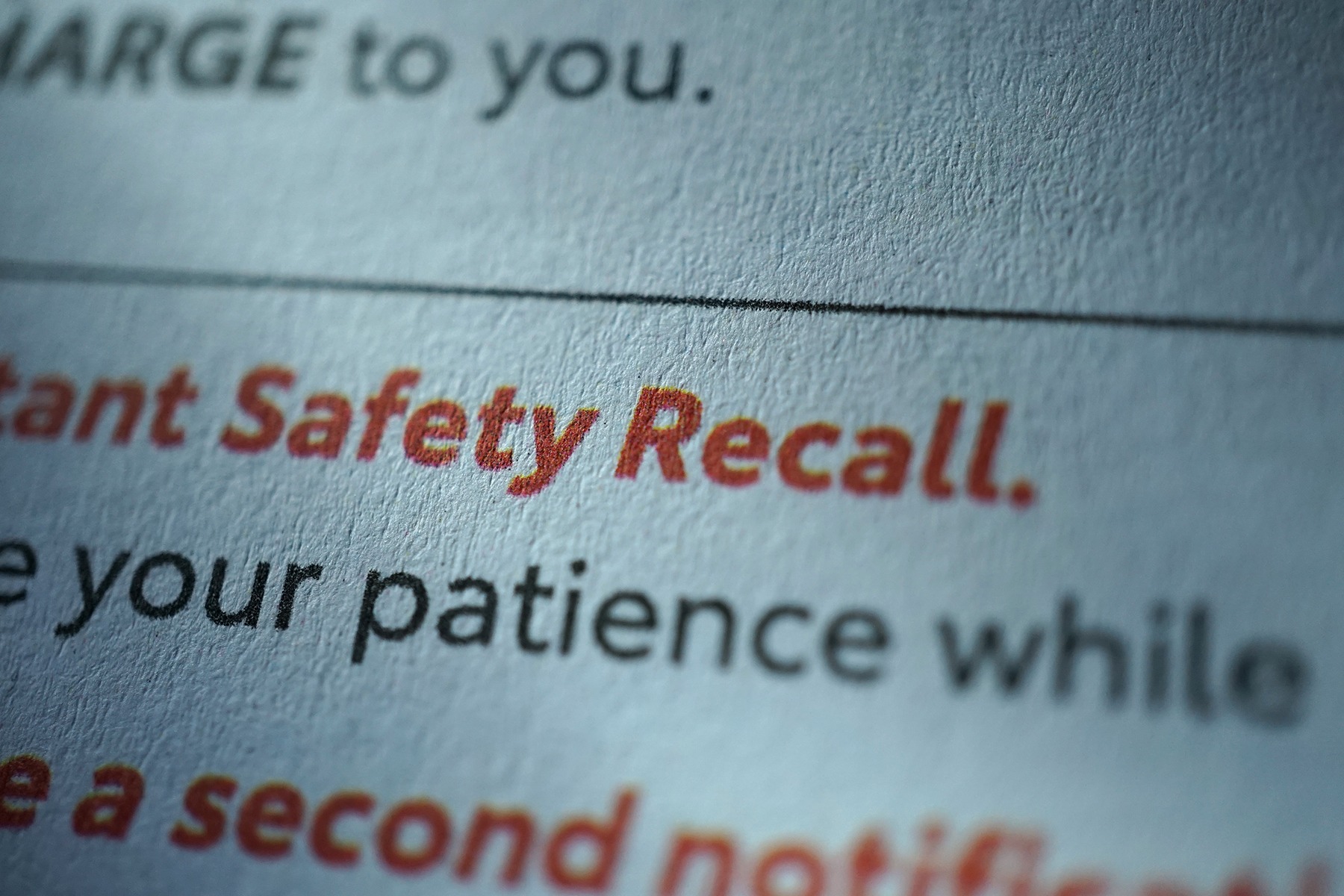Companies that don’t use online communication tools to inform or engage with parents about children’s product recalls are taking a huge quality and brand reputation risk.
A study by consumer advocacy organization Kids In Danger (KID) said that digital information about child-related product recalls is often hard to find, with brands making a conscious decision to limit consumer awareness of potential safety or compliance issues with children’s products. As a result, and according to KID’s “Recalls Online: Missed Opportunities for Engagement” report, transparency around a product recall process is very much a hit-and-miss affair, especially in terms of what the customer needs to do next.
In the months between July 1, 2017 and June 30, 2019, the U.S. Consumer Product Safety Commission (CSPC) issued recall notices for 122 children’s products. Each one of these recalls was posted on the CSPC website, but there was a significant number of companies who either failed to post recall information on their own website or decided not to publicize the recall via social media channels.
Around 65 percent of companies provided details about the recall on their own website, but some of those recall notices neglected to give consumers important information such as how to participate in a recall or what the potential dangers to a child could be. Of greater concern to KID was the fact that social media activity was also limited, with 52 percent of companies failing to post anything about the recall on their Facebook, Twitter or Instagram accounts.
“In the age of social media, customers can and do interact with companies on social media, and these channels advertise sales, events, and other information to customers, but companies are not using these channels to promote recall information,” the report said. “As such, it is much harder to garner consumer awareness of recalls and harmful products when such information is not expressed on channels a customer is likely to check.”
A Duty of Care
Recalls of children’s products have increased in recent years, with companies forced to remove items from the marketplace after it became clear that there was a potential for serious injury or even death. Fisher Price, for example, recalled 4.7 million Rock ‘n Play Sleepers in April 2019 after a number of infant fatalities, and there is a consensus that companies are not doing enough to inform consumers when a recall is initiated.
When a product quality issue surfaces, companies have a responsibility to inform consumers, a scenario that becomes more elevated when children are involved. And, thanks to the evolution of the connected society, people expect to have information at their fingertips. Sadly, it appears that there is a dissonance between the required transparency and the product recall process itself.
Social media may be a blessing and a curse in terms of corporate communication, but it is a direct channel to the customer. Over the last decade, a defined social media outreach plan has become an essential part of the product lifecycle, and brand reputation and consumer trust is often linked directly to digital media (and sharing) sources such as Facebook, Instagram (Facebook-owned) and Twitter.
The full KID report [PDF] can be accessed here, but there are some “highlights” that show an alarming level of online inaction and social media mistakes by brands:
- Out of the 122 companies that experienced a product recall in the stated time period, 117 had websites. A full 35 percent failed to post any information about the recall on the website.
- Around 47 companies out of the 87 with a Facebook page posted about the recall.
- 85 companies had Twitter accounts, 42 posted something about the recall to their followers.
- A mere 14 out of the 81 companies with Instagram accounts highlighted the recall to their community.

Source: Kids In Danger
The simple fact is that social media can – if used properly, naturally – be both a business optimization tool and a direct channel to customers.
Online resources and social media channels are a ubiquitous part of the connected society, so it is hard to comprehend why companies would make it difficult for customers to find out the information they need. Unless, of course, the company has a deeper product quality issue that it is choosing to ignore.
Recalls are part of the daily news cycle, but if a poor quality product enters the marketplace and, importantly, needs to be recalled, then there is a defined need for that company to make sure that all of its communication channels are populated with relevant data. Customer expectations have risen in the last decade, and companies that promote excellence through quality need to make sure that – in the event of a negative event – all the bases are covered.
“A consumer is much more likely to check their social media timelines than to deliberately check the CPSC website on any given day,” the authors of the report said. “Thus the onus should be upon the manufacturer to ensure that recall information is properly distributed to where customers will see it, rather than requiring customers to search for recalls of their own volition.”
The financial cost of a quality incident that impacts brand reputation is often incalculable. This ETQ whitepaper explains why QMS matters.
Customers need quality reassurance
The CSPC itself also came in for some criticism from KID, but the commission is (like consumers) dependent on companies providing it with accurate recall information and relevant recall resources.
When a recall happens, companies are recommended by the CSPC to notify consumers that there is a quality or safety problem with a product, the report said, but this is a suggestion rather than an enforceable requirement. The problem is that the chances of a recalled children’s product – defined by KID as “any product designed for the care of or use by children” – increase significantly if the consumer can’t find the recall participation information itself.
Factor into the mix that the average parent is unlikely to spend their days searching the CSPC website for recalls. In other words, if a consumer doesn’t know that a product recall is in effect, they will probably keep using that product … until something breaks or causes harm to the child.
Deaths, injuries and property damage caused by defective products cost the economy more than $1 trillion every year, according to the CSPC website, and the commission makes a big deal out of its commitment to protecting the public from poor quality or dangerous consumer goods.
However, KID said that CSPC’s press releases for the children’s product recalls often provide links to “entirely different or unrelated” pages, a troubling discovery that will do little to alleviate the concerns of consumers who are searching for actual information. An added worry is that consumer contact information on the CSPC website does not always link to a dedicated recall page, with many of these links just directing the consumer to a company homepage.
Taking this into account, KID recommended that the CSPC establish a mandate that companies offer a dedicated webpage that has all the information for the consumer side of the recall equation. At the very least, the company website itself should have all the details that a customer needs to participate in a recall. In addition, companies should make every effort to reach out to customers through social media channels and direct communication.
Quality Management relies on communication
Hundreds of thousands (and often millions) of consumer items are recalled every year by companies for a variety of reasons, most of which are related to the chances of serious injury or even death. Even a quick glance at the CSPC website brings a host of poor quality and non-compliant products into focus, with a number of high-profile brands currently engaged in a recall process.
As we have noted many times on the ETQ Blog, product recalls are part and parcel of the quality landscape.
The pace of modern society and the expectations of end consumers has put quality under pressure, and the cost of a recall can not only impact the bottom line, but also erode consumer trust in a brand. Quality management systems can help patch the holes before the product is shipped and provides a transparent record of the product lifecycle. However, a company’s commitment to quality does not end when an item leaves a warehouse or production facility.
Consumers have a right to know if the product that they bought in good faith has an issue that could have been prevented or identified at source. And while the long-standing principle of caveat emptor – “let the buyer beware” – may be a smoke screen that companies want to hide behind, the digitalization of society means that people should be able to find out what they need to know when they need to know it. Anything less, and a company’s commitment to quality can be questioned on every level.
ETQ is the leading provider of quality, EHS and compliance management software. Trusted by some of the world’s strongest companies, we are relentlessly focused on developing QM software tools with built-in best practices and powerful flexibility to drive process excellence through quality.
To find out more about how ETQ can move you along your quality journey, contact us to request a demo of our industry-leading SaaS solution.


